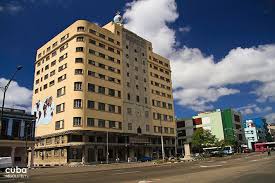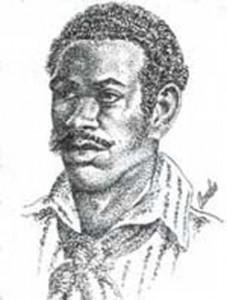Freemasonry: Mother of the Cuban Nation
Ariel Glaria

HAVANA TIMES —The ups and downs of history and ill intentions of individuals have made us forget the history – today incomplete – of an institution we could well call the mother of the Cuban nation: freemasonry.
However we know more about freemasonry in the United States, whose symbols adorn cities and dollar bills, than about its significance to our own history, elegantly illustrated by Emilio Roig:
“To fully express what freemasonry represents for us in a few words, suffice to say that, without mentioning it once, twice and perhaps a thousand times, one cannot write the history of Cuban culture or Cuba’s struggle for freedom.”
Introduced into the country by British conquistadores in 1762, when, according to a Mason historian, “the light of freemasonry shone in Cuba for the first time”, it became deeply rooted in the culture and expanded until the beginning of the 19th century, when French émigrés, coupled with agricultural, industrial and market innovations, brought about a revolution in the field of ideas.
As we will see below, the first independence plot was hatched at a masonic lodge. Our first attempt at drafting a political constitution for a future Cuban nation was also made by freemasons in 1810. Its author was the venerable Joaquin Infante.

The most eloquent testimony of freemasonry’s historical significance for Cuba is to be found in our loftiest symbol, the Cuban flag, where the masonic ideal is concretely expressed in the red, masonic triangle placed over the three blue and two white bands, a symbol that sealed the intimate connection between Cuban independence and freemasonry for eternity. Less striking evidence for this connection is to be found in the names of some streets in Havana, such as Amistad, Concordia and Virtudes.
Such lofty figures as Carlos Manuel de Cespedes, Ignacio Agramonte, Perucho Figueredo, Calixto Garcia, Antonio Maceo and Jose Marti were freemasons.
The uprising of 1810, known as the “Great Masonic Conspiracy”, was organized at a lodge in Havana. Those implicated included Roman de la Luz, uncle of the renowned Jose de la Luz y Caballero, and Luis Bassave Cardenas, who actually called on different popular sectors, such as the black and mixed race residents of the neighborhoods of Belen, Jesus Maria, Los Barracones, El Manglar and others, to take part in the rebellion.

A white criollo and the son of a colonel, Bassave Cardenas worked closely with the free black man Jose Antonio Aponte. The latter, having evaded official investigations and not involved himself directly in the preparations of the plot, would set in motion a conspiracy two years later.
Some sources point out that the street where Aponte lived, located in what is today Centro Habana, owes the name “Jesus Peregrino” to an altar with that image that Aponte had in the living room of his home.
Though Aponte’s conspiracy isn’t directly linked to the great masonic conspiracy, its scope, development and outcome are the result of many points of coincidence.
Aponte was not subjected to any trial. The island’s Captain General and two other crown officials agreed to sentence Aponte and his 7 followers to death.
On April 9, 1812, they died at the gallows. The head of the leader, the criollo and free black man Jose Antonio Aponte, was exhibited in an iron cage at the current intersection of Belascoain and Carlos III, where, more than a century later, Cuba’s Great Masonic Lodge would be built.

My grandfather left a picture of himself in full dress attire showing him as a 33-degree servent.
I am trying to find information about his families such as parents and possible siblings if he had any.
I was told by some of the old folks that he was a member of the Calberaos de la Luz organization and that the lodge would possibly have past recorded information about all their members as it was required to become a member.
I can furnish a photo of him warring attire. He and his wife came to the United States in 1908 to live.
any information as to how to research this would be greatly appreciated.
Thank you,
George Barcelo Jr.
Hello Mr Ariel Glaria. I am trying to find a link or where I can find any info on the FreeMason’s Lodge in Cuba. I would greatly appreciate any help or idea that you might know. We believe someone may have been a mason and his name shows up on an old page/picture with a mason’s symbol.
ALGOGADU
La Resp Log Nuevo Mundo
No. 5
A SUS ILUTRES FUNDADORES
MAY 27, 1865
Thank you.
The Masonic Lodge Building in Havana seem to be in better shape than most buildings in the country…..am I correct?
Westside Johnny,
Please see my previous message below.
It got posted out of sequence by mistake.
Mr. Duffy, please, tell the truth about how freemasons were treated by the Revolution, suspended, properties appropriated, ostracized. Only recently have they been allowed to be seen as long as they are discreet and say nothing about the past abuses.
.
Thank You for the information Brother. /G
yes they are, they were never closed, and allowed to go on about their business, i have been to many lodges in Cuba over the last 15 years, never an issue and always warmly welcomed
I noticed the picture of the Masonic Lodge building in Havana. Are Masonic Lodges still active in Cuba with the advent of Castro and Communism. I only ask because in other Communist Countries, Masonic Lodges were banned and Masons arrested and/or executed.
Obviously a cowan…..
How is this relevant to the article? Obviously you have no idea as to its meaning.
What can be done to help?
The Free Masons in Port Alberni B.C. support a Masonic seniors rest home in Cuba.
Oh Lord, My God, is there no help for the Widows Son?